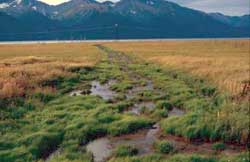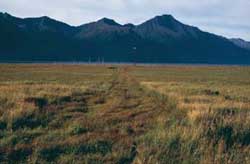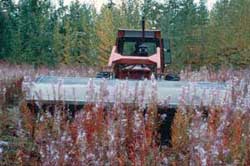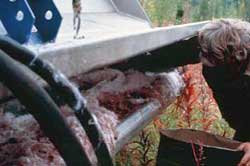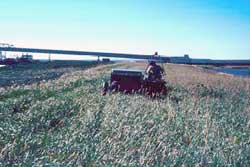Chapter 7: Species Notes Species to Avoid Introduced species have the potential to escape into the natural environment. This problem has not occurred in Alaska, yet some introduced species have become well established; clovers are a good example. In most areas of Alaska, clovers should be avoided because they have been known to invade native plant communities. This is especially true in remote areas. Native Species Revegetation with native species is strongly encouraged. Federal agencies are directed or strongly encouraged to use native species by various Executive and Administrative Orders. These orders do not, as yet, specify germplasm source. However, species collected near a disturbance tend to be more biologically suited for revegetating the site. Revegetation with native species provides the advantages of better adaptation to the environmental conditions and a more natural appearance in their setting than introduced species. In general, the use of introduced species for lawns and playing fields is acceptable. 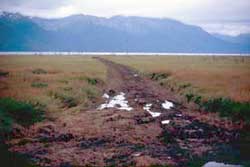
Figure 65: A coastal wetland site needing revegetation. This area was reseeded with locally collected Lyngby’s sedge seed and fertilized in May 1995. This project is an example of what can be accomplished with locally harvested seed.
The complete report on this project can be found at the following link: Wright, Stoney J. 1997. The need to select more native species for revegetation in Alaska provided the incentive to fund the seed collection program. These photos show the industry at work. Some of the newly released germplasm, such as Kobuk Germplasm dwarf fireweed, come from this new seed collection program. This section (Species Notes) will be updated when new native species become available. In 2000, a Native Plant Directory was published (last revised in 2005) to enable buyers to find growers who are marketing native plants: https://plants.alaska.gov/native/index.htm. The Native Plant Directory will be revised periodically and will be an additional source of information on native species availability. |

